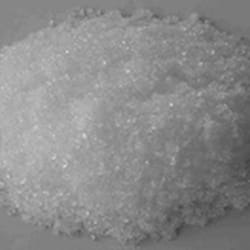
IUPAC Name
Sodium Carbonate
Cas Number
497-19-8
HS Code
2836.20.00
Formula
Na2CO3
Appearance
White Granules
Common Names
Soda ash, dense, Sodium carbonate, Sodium carbonate, anhydrous, Washing soda
Packaging
50 kg PP/PE Bag
Soda ash dense is the industrial name of anhydrous sodium carbonate. Sodium carbonate decahydrate is a colorless, transparent crystalline compound which is commercially known as soda or washing soda. Soda ash is produced by the ammonia soda method (Solvay process) using ammonia and carbon dioxide to treat sodium chloride. The naturally occurring natural mineral “Trona” is also used as a source of sodium carbonate. It is an integral part of many industries and manufacturing processes, has a wide range of industrial uses, is crucial in the manufacture of flat glass and container glass, and is a key component of detergent production.
Sodium carbonate occurs in nature as Trona, trisodium hydrogen dicarbonate dihydrate (Na3HCO3CO3·2H2O). Trona is also mined from some alkaline lakes by dredging. Hot saline springs continuously replenish the salt in the lake so that provided the rate of dredging is no greater than the replenishment rate, the source is fully sustainable.
In 1861, the Belgian industrial chemist Ernest Solvay developed a method to convert sodium chloride to sodium carbonate using ammonia. The Solvay process centered around a large hollow tower. At the bottom, calcium carbonate (limestone) was heated to release carbon dioxide:
CaCO3 → CaO + CO2
At the top, a concentrated solution of sodium chloride and ammonia entered the tower. As the carbon dioxide bubbled up through it, sodium bicarbonate precipitated:
NaCl + NH3 + CO2 + H2O → NaHCO3 + NH4Cl
The sodium bicarbonate was then converted to sodium carbonate by heating it, releasing water and carbon dioxide:
2 NaHCO3 → Na2CO3 + H2O + CO2
Meanwhile, the ammonia was regenerated from the ammonium chloride byproduct by treating it with the lime (calcium hydroxide) leftover from carbon dioxide generation:
CaO + H2O → Ca(OH)2
Ca(OH)2 + 2 NH4Cl → CaCl2 + 2 NH3 + 2 H2O
Because the Solvay process recycles its ammonia, it consumes only brine and limestone and has calcium chloride as its only waste product. By 1900, 90% of sodium carbonate was produced by the Solvay process.
It is developed by Chinese chemist Hou Debang in the 1930s. The earlier steam reforming by-product carbon dioxide was pumped through a saturated solution of sodium chloride and ammonia to produce sodium bicarbonate via the following reactions:
NH3 + CO2 + H2O → NH4HCO3
NH4HCO3 + NaCl → NH4Cl + NaHCO3
The sodium bicarbonate was collected as a precipitate due to its low solubility and then heated to yield pure sodium carbonate similar to the last step of the Solvay process. More sodium chloride is added to the remaining solution of ammonium and sodium chlorides; also more ammonia is pumped at 30-40°C to this solution. The solution temperature is then lowered to below 10°C. The solubility of ammonium chloride is higher than that of sodium chloride at 30°C and lower at 10°C. Due to this temperature dependent solubility difference and the common-ion effect, ammonium chloride is precipitated in a sodium chloride solution.
The Chinese name of Hou's process (è”åˆåˆ¶ç¢±æ³•) means "Coupled Manufacturing Alkali Method": Hou's process is coupled to the Haber process and offers better atom economy by eliminating the production of calcium chloride since ammonia no longer needs to be regenerated. The by-product ammonium chloride can be sold as a fertilizer.